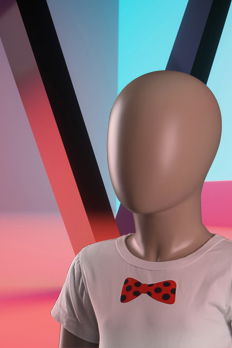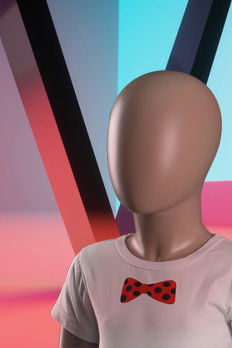Kid Mannequins

 It may be surprising that some mannequins are made to look like children rather than full size adults. Children's mannequins are becoming more common in retail clothing stores, as children's retail sales in general are skyrocketing. Obviously, kid's mannequins are designed with the purpose to show off children's clothes, and they are produced with the same attention to detail and craftsmanship as those made for adult clothing. All of the materials and techniques used on adult mannequins are implemented with the same precision and car with child mannequins. As many retailers move their display models toward the younger generations, these kid mannequins are showing up everywhere.
It may be surprising that some mannequins are made to look like children rather than full size adults. Children's mannequins are becoming more common in retail clothing stores, as children's retail sales in general are skyrocketing. Obviously, kid's mannequins are designed with the purpose to show off children's clothes, and they are produced with the same attention to detail and craftsmanship as those made for adult clothing. All of the materials and techniques used on adult mannequins are implemented with the same precision and car with child mannequins. As many retailers move their display models toward the younger generations, these kid mannequins are showing up everywhere.
To date, department stores and children's specialty stores are the largest display stage for child mannequins. They come in many shapes and sizes, replicating every age from infant, to toddler, to adolescent. All mannequins are designed to realistically display the clothing inventory of a retailer, so child mannequins improve those display abilities for children's products by showing parents how the clothes fit on similar figures to their children. Similar to adult mannequins, child mannequins can have feet and hands, or they might just represent the torso of a child. Though full body mannequins can show off every clothing article such as shoes, hats, jewelry, etc., the torso mannequin takes up much less space and allows for more mannequins to display shirts and pants. Pants are simply fastened around the bottom of the torso and left to hang down below. Deciding what type of child mannequin to use will depend on the amount of floor space and the number of items needing mannequin display.
The materials used for child mannequins are fiberglass, plaster, and wood, similar to adult mannequins. They can also come with facial features done in realistic detail or those with more abstract qualities, and they can even have real human hair when needing additional hat display. One of the major differences with child mannequins is that they are most commonly built in stationary poses. This static position is unmovable to avoid damage with such a small model. Though this is the norm, still some child mannequins have movable limbs and features. It is just a question of necessity.
If a retail store focuses on children's clothing or has children's clothing for sale at all, children's mannequins are extremely important to display. Customers have come to expect life size representations of the clothes they are considering. As children's retail grows, so the parental consumers become more expectant and critical. Including nice representations of the fit and look of retail clothes on child mannequins is guaranteed to increase store traffic.
Article Source: http://EzineArticles.com/491757



